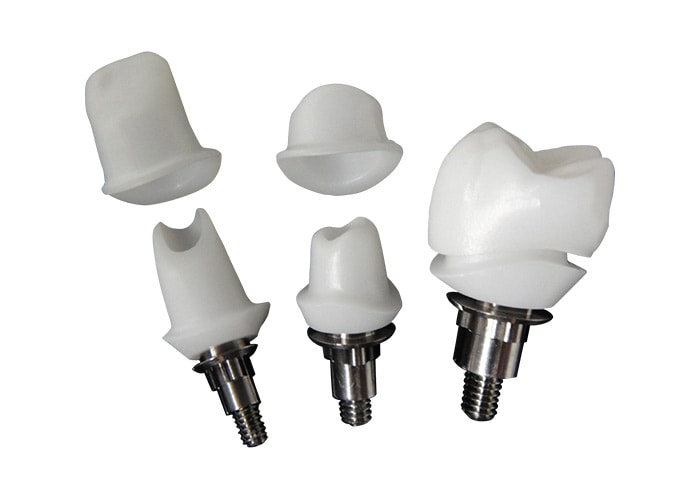Zirconia abutments with titanium bases are often used when creating all-ceramic or zirconia restorations in the anterior region of the mouth. This is due to their natural-looking emergence profile that ensures ideal soft tissue contours and a more aesthetically pleasing result. When selecting an abutment for a zirconia crown or bridge, a zirconia abutment should be chosen; however, if an all-ceramic restoration is being used, a titanium abutment should be selected instead.
Zirconia abutments come in two different types: implant-based and tooth-borne. The implant-based version needs to be inserted into the implant head and secured with an abutment screw before it’s ready for use. It is recommended to choose this type of abutment when constructing full arch restorations with more than four implants. The tooth-borne zirconia abutment can be cemented directly onto the implant receptor site and it’s best suited for single implant restorations.


